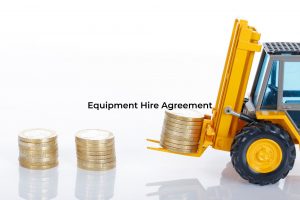Equipment hire agreements are common in various industries across Australia. These agreements allow businesses and individuals to rent equipment and machinery for a specified period, providing flexibility and cost-effectiveness. However, to ensure a smooth and fair arrangement for both parties involved, it is crucial to understand the key clauses of an equipment hire agreement.
IDENTIFICATION OF PARTIES
The first section of an equipment hire agreement identifies the parties involved. This includes the name, address, and contact information of the equipment owner (the ‘Hirer’) and the individual or business renting the equipment (the ‘Hiree’). Ensure all parties are correctly named, and their contact details are accurate to avoid future disputes.
DESCRIPTION OF EQUIPMENT
This clause outlines the equipment being rented, including its make, model, serial number, and condition at the time of rental. It is essential to specify the equipment’s condition to prevent disputes regarding damages or wear and tear when returning the equipment.
RENTAL PERIOD
Specifying the rental period, including the start and end dates is essential. Additionally, include information about any potential extensions, renewal options, and conditions for early termination. Clarity regarding the rental period is crucial for both parties to manage their schedules and expectations. Hirees often value the flexibility to adjust rental periods to save costs and resources.
RENTAL FEES AND PAYMENT TERMS
It is important to clearly state the rental fees, including any security deposit, insurance fees, and additional charges (eg, delivery and pickup fees, fuel consumption, wear and tear, and cleaning fees). The agreement must outline the payment schedule, due dates, and acceptable payment methods and be specific about late payment penalties to encourage timely payments. Transparent pricing is essential to avoid unexpected costs.
RESPONSIBILITIES AND LIABILITIES
This clause defines the responsibilities of both parties. The equipment owner (Hirer) typically retains ownership and maintenance responsibilities, while the renter (Hiree) is responsible for the proper use, care, and return of the equipment in the same condition. Include clauses addressing liability for damages, accidents, or theft, and detail insurance coverage if applicable.
MAINTENANCE AND REPAIRS
Specify maintenance requirements and procedures for routine servicing and repairs. Clearly outline which party is responsible for these costs and the process for notifying the equipment owner of any issues.
INDEMNIFICATION AND INSURANCE
The agreement should outline the indemnification provisions in the event of damage, loss, or accidents involving the equipment. This clause defines the responsibilities of each party and their potential liability. Additionally, it is common for equipment hire agreements to require the Hiree to maintain adequate insurance coverage to protect against potential risks.
INSPECTION AND RETURN
The agreement must clearly define the process for equipment inspection upon delivery and return. This includes documenting the equipment’s condition with photographs or written records. It is crucial to agree on what constitutes acceptable wear and tear versus damage during the rental period.
TERMINATION AND DEFAULT
This section outlines the conditions under which either party can terminate the agreement, including breaches of contract, non-payment, or other violations. It should also detail the consequences of termination, such as early termination fees or equipment retrieval procedures.
DISPUTE RESOLUTION AND JURISDICTION
Including a clause specifying the method of resolving disputes, whether through arbitration, mediation, or litigation is also essential. Additionally, the agreement must clarify the jurisdiction and venue for legal proceedings in case of a dispute.
The IP House Lawyers has assisted many clients in drafting and reviewing equipment hire agreements to ensure their enforceability and compliance with Australian laws and regulations, including those related to consumer rights, workplace health and safety, and taxation, as well as preventing disputes and misunderstandings.
For any further information or queries on the above content, please contact us.
The Author
Jean Kallmyr | Lawyer, The IP House Lawyers | t: 0435 799 831 | e: admin@theiphouse.com.au
Key Contact
Claire Darby | Managing Director/Lawyer, The IP House Lawyers | t: 0412 998 951 | e: claire@theiphouse.com.au
Disclaimer
The information and contents of this publication do not constitute any legal or financial advice. This publication is intended only for reference purposes for The IP House Lawyers’ clients and prospective clients.
Image by vwalakte on Freepik

